Countdown example using stream, not using setState(...) therefore its all stateless.
this borrow idea from example flutter_stream_friends
import 'dart:async';
import 'package:flutter/material.dart';
import 'package:countdown/countdown.dart';
void main() {
runApp(new MyApp());
}
class MyApp extends StatelessWidget {
static String appTitle = "Count down";
@override
Widget build(BuildContext context) {
return new MaterialApp(
title: appTitle,
theme: new ThemeData(
primarySwatch: Colors.purple,
),
home: new StreamBuilder(
stream: new CounterScreenStream(5),
builder: (context, snapshot) => buildHome(
context,
snapshot.hasData
// If our stream has delivered data, build our Widget properly
? snapshot.data
// If not, we pass through a dummy model to kick things off
: new Duration(seconds: 5),
appTitle)),
);
}
// The latest value of the CounterScreenModel from the CounterScreenStream is
// passed into the this version of the build function!
Widget buildHome(BuildContext context, Duration duration, String title) {
return new Scaffold(
appBar: new AppBar(
title: new Text(title),
),
body: new Center(
child: new Text(
'Count down ${ duration.inSeconds }',
),
),
);
}
}
class CounterScreenStream extends Stream<Duration> {
final Stream<Duration> _stream;
CounterScreenStream(int initialValue)
: this._stream = createStream(initialValue);
@override
StreamSubscription<Duration> listen(
void onData(Duration event),
{Function onError,
void onDone(),
bool cancelOnError}) =>
_stream.listen(onData,
onError: onError, onDone: onDone, cancelOnError: cancelOnError);
// The method we use to create the stream that will continually deliver data
// to the `buildHome` method.
static Stream<Duration> createStream(int initialValue) {
var cd = new CountDown(new Duration(seconds: initialValue));
return cd.stream;
}
}
The difference from stateful is that reload the app will restart counting. When using stateful, in some cases, it may not restart when reload.

